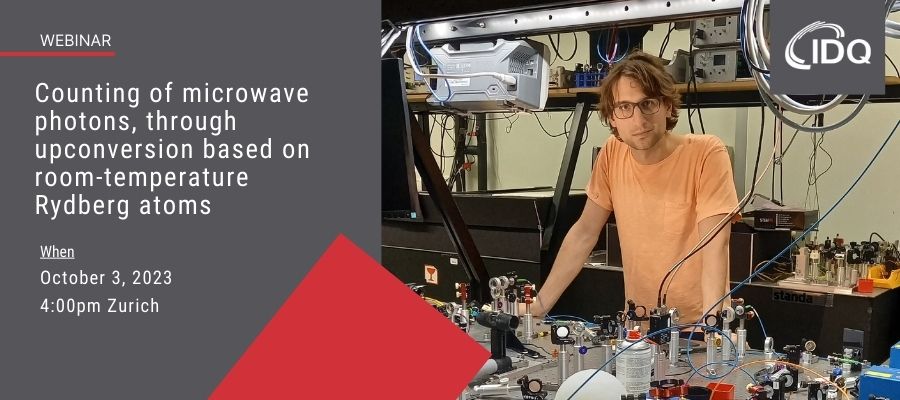Counting of microwave photons through upconversion based on room-temperature Rydberg atoms

Watch Dr Michal Parniak from The Centre for Quantum Optical Technologies QOT, University of Warsaw in this webinar: Counting of microwave photons through upconversion based on room-temperature Rydberg atoms.
About this webinar
Photon counting at the microwave level presents immense challenges and can only be realized with advanced superconducting, cryogenic circuits operating at dilution refrigerator temperatures. On the other hand, optical photons can be counted with astounding efficiency, low dark-count rates, and excellent timing precision using superconducting nanowire detectors (SNSPDs). The advantages of these optical detectors can be leveraged for microwave photon counting using upconversion. In our experiment we have used Rydberg atoms for this purpose. Remarkably, Rydberg atoms couple well to both microwave and optical photons allowing a parametric process to be facilitated with good efficiency. We have also discovered that room-temperature atomic vapor, even though it is an intrinsically hot and noisy system, can support the upconversion process and maintain its low-noise characteristics. We have designed a process in which all pump fields address different transitions than the upconverted photon, thereby minimizing noise down to the level of single photons.
With our setup, we have shown upconversion and detection of microwave room-temperature thermal background radiation, with intrinsic upconverter noise reaching down to single Kelvins of noise-equivalent temperature. The SNSPD photon counters have allowed us to observe second-order thermal character of radiations, as well as its two-photon interference with a coherent microwave tone. Our results elucidate the prospect of atom-based devices (which in the next step should be enhanced via cavity effects) coupled with photon counters acting as ultra-precise and quite unique microwave detectors.
About the Speaker:
Dr Michał Parniak joined the Centre for Quantum Optical Technologies QOT, University of Warsaw in 2020 as a group leader after a postdoctoral stay in QUANTOP, Niels Bohr Institute, University of Copenhagen. His research interests cover various topics in quantum optics, such as single photon detection, optical quantum information processing and communication, atomic ensembles, nonlinear optics, quantum optomechanics, and most recently Rydberg-atom physics.
Within QOT he develops experimental implementations of quantum protocols designed by the theory groups and maintains close experimental collaboration with prof. Wojciech Wasilewski (QOT) and prof. Eugene Polzik (Niels Bohr Institute, University of Copenhagen). His most significant scientific achievements include demonstrating superresolution in imaging using two-photon interference, demonstrating the record-breaking quantum memory in terms of its capacity, and demonstrating the first entanglement of macroscopic spin and mechanical systems.
Webinar Details:
On Demand
Watch this webinar by clicking the button below.


